Today, we have a surprise guest on the blog who wished to talk about the famous giant insects from Carboniferous, and blow your mind about all you think you know about them. There is so much to explore to truly grasp this subject that we have cut it into 2 parts. Enjoy!
About the author
PhD candidate at the Muséum national d’Histoire naturelle of Paris, I’m working on insects and their evolution. If I would rather not reveal my identity online, it is because I do not wish to have a digital presence.
One hundred fifty years ago, in the centre of France, miners made an unexpected and incredible discovery: a fossil insect with a wingspan as wide as that of a dove. That was the beginning of the giant insects legend. Nowadays, every entomology- or palaeontology-lover knows this fossil, and the others, sometimes even larger, which have been discovered. However, what do we really know about these insects? And what about their extinction?
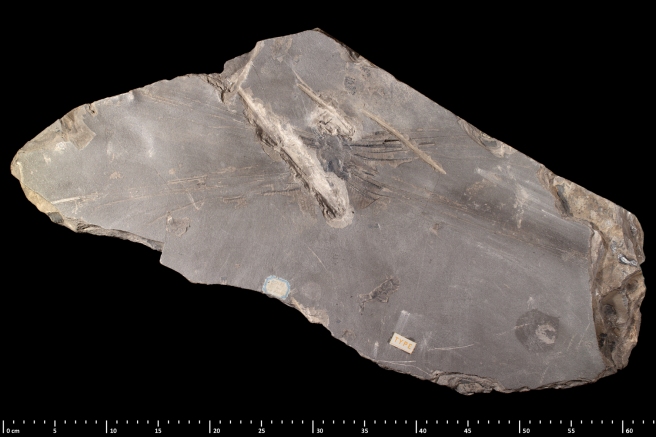
Here, I will do a summary of the knowledge about giant insects, and give a point of view quite different from the usually admitted one.
What is a giant insect?
Most of the time, when we speak about a ‘giant insect’, we refer to Meganeura monyi (Brogniard, 1884), the first discovered, and also to all other big-sized fossil insects. Which is quite foggy and needs to be clarified.
First of all, it must be reminded that most fossil insects are not big at all, as it can easily be seen in amber conserved ones. But even the oldest known ambers are quite recent compared to the insect history (up to 125 mya), however, it is also true for older insects. For example, in Avion outcrops in the north of France, approximately as old as the outcrops where Meganeura was found, no insect with such dimensions was ever found, and most of the hundreds of insects found there were not larger than the small grasshoppers you could find in your garden. Thus, giant insects are unusual, and not the rule, whatever the geological period.
If we define a giant insect as a “fossil insect, if winged, measuring at least 30 cm in wingspan” (which is more than the size of your hand), thus giant insects are known from the end of the Carboniferous (315 mya, see Ren etal., 2008) through the end of the Triassic (220 mya, see Sharov, 1968). It’s a very long period of time, longer than the time between now and the T. rex. It is generally admitted that the maximum size of these insects lowered with time, up until their extinction (Clapham & Karr, 2012). As defined, giant insects are also very diversified and contain members of the Odonatoptera, Palaeodictyoptera, Titanoptera, and stranger insects such as Bojophlebia prokopi Kukalová-Peck, 1985.

What is the size of the giant insects?
The largest known wing comes from Meganeuropsis permiana Carpenter, 1939, and measures 33 cm. Most of the largest giant insects (including Meganeura) belong to the same group, known as the griffenflies, and are often described as giant dragonflies. However, they are only distant cousins of our extant dragonflies, and their morphology, biology and flight capacity were quite different. Thus, modern dragonflies are not living fossils!
Another group containing giants is the Palaeodictyopterida, often named ‘six winged insects’ but this question deserves a complete article. The largest known species measured 54 cm in wingspan. It is known from a fragment of thorax. And the scientist who described it is not known to be rigorous. All other better known Palaeodictyoptera measured about 40 cm, such as Homoioptera gigantea Agnus, 1902.
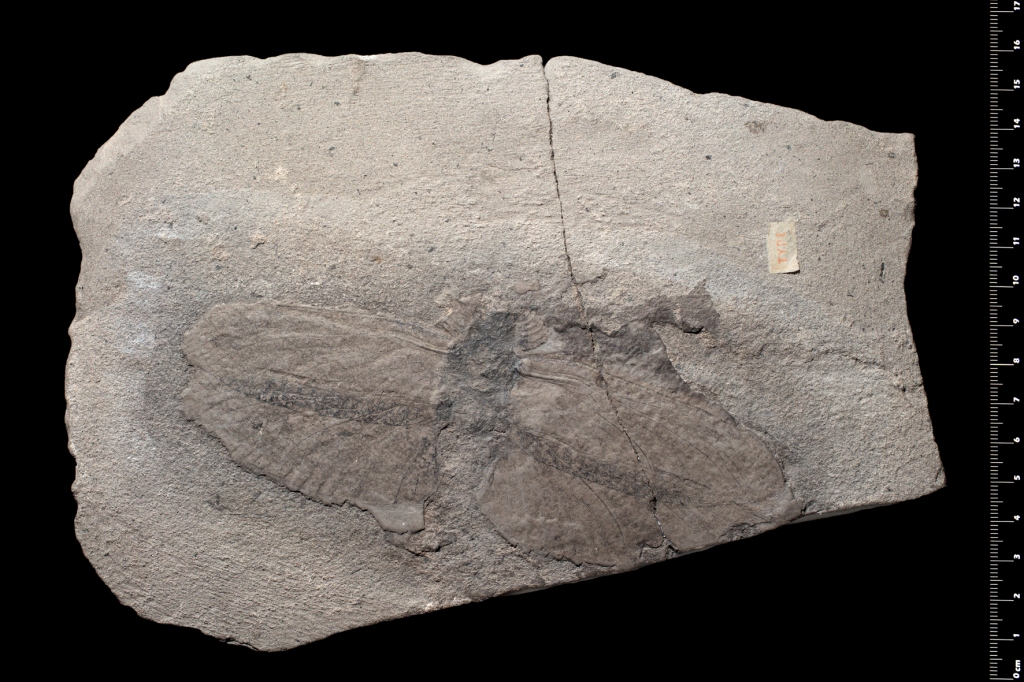
Bojophlebia prokopi also measured approximately 40 cm in wingspan.
Last but not least, the largest members of the Titanoptera, often described as giant mantises but closer to katydids and grasshoppers (Orthoptera), also reached up to 40 cm in wingspan.
However, is the wingspan enough to determine what is the largest insect? I think not, at least because there are wingless insects. If you don’t agree, you could stop reading, what follows will not interest you (but you will have to admit that the largest modern animal is a worm thinner than your arm, but which can reach 50 m long if it is correctly stretched, and not the blue whale, whose sole heart can contain tens of those worms). Otherwise, weight matters. And after all, adaptations to gigantism are more linked to the weight than to the length, or the wingspan. So, let’s speak about the weight of giant insects.

Most weight estimations for the largest griffenflies range between 200 and 500 g, which is roughly the weight of a dove, while their wingspans are also the same. We will now see what the methodology is used for them.
For the largest ones, the methodology is simple: Meganeura is considered as a cylinder of 35 cm long, 3 to 4 cm in diameter, and with a density of 1. Thus you obtain a weight of 500 g. However a Meganeura is not a cylinder, and even less a 3 to 4 cm wide cylinder: the spacing between the wings is about 2 cm, but they are attached near the largest point of the thorax, otherwise they couldn’t move without hitting it! Moreover, the thorax of such a beast is the largest point of the whole body, as is the case in all insects that fly a lot, so its abdomen was probably way thinner. I will not detail the supposed density, probably lower, as this weight estimate is already discarded.
An other way to estimate weight that gives off rather high results is to use a more or less complex linear regression with extant dragonflies as basis. Clapham & Karr (2012) used tens of dragonflies to propose a rather complex model. They obtained a volume for Meganeuropsis of 392 mm3, allowing to reasonably estimate the animal’s weight at around 300 g (estimation that I do for you, as the weight is not mentioned in their article). However, by looking a little closer at their data and models, such a volume implies a thorax 4 cm wide (39.87 mm to be precise). But Meganeura’s thorax (which has the diligence to be conserved) measures 28 mm large according to them, for a 300 mm long wing , while Meganeuropsis’ wing is 330 mm long. Thus a 10% wing length increase would correlate with a 42% thorax width increase. For two quite related animals, this is quite strange, as well as their volume estimate.
Generally, the problem with any linear regression made on a griffenfly is that all extant dragonflies are too small, and that even the body length of these giants is debatable, as it is not known from any species with a wingspan superior to 40 cm. It is generally regarded that Meganeura and its relatives have a wingspan/length ratio similar to some extant dragonflies like hawker dragonflies (the big blue and green ones that fly over ponds, in Europe). This gives then a 35 to 40 cm length. But if we look at the fossil record, it appears that the big griffenflies where the body is known tend to be much shorter than predicted by this kind of estimation. Namurotypus sippeli Brauckmann and Zessin, 1989, with its 30 cm wingspan, only measures 15 cm long. Compared to the 63 cm of Meganeura, it gives a length of 31 cm, which is 12 to 29% shorter.
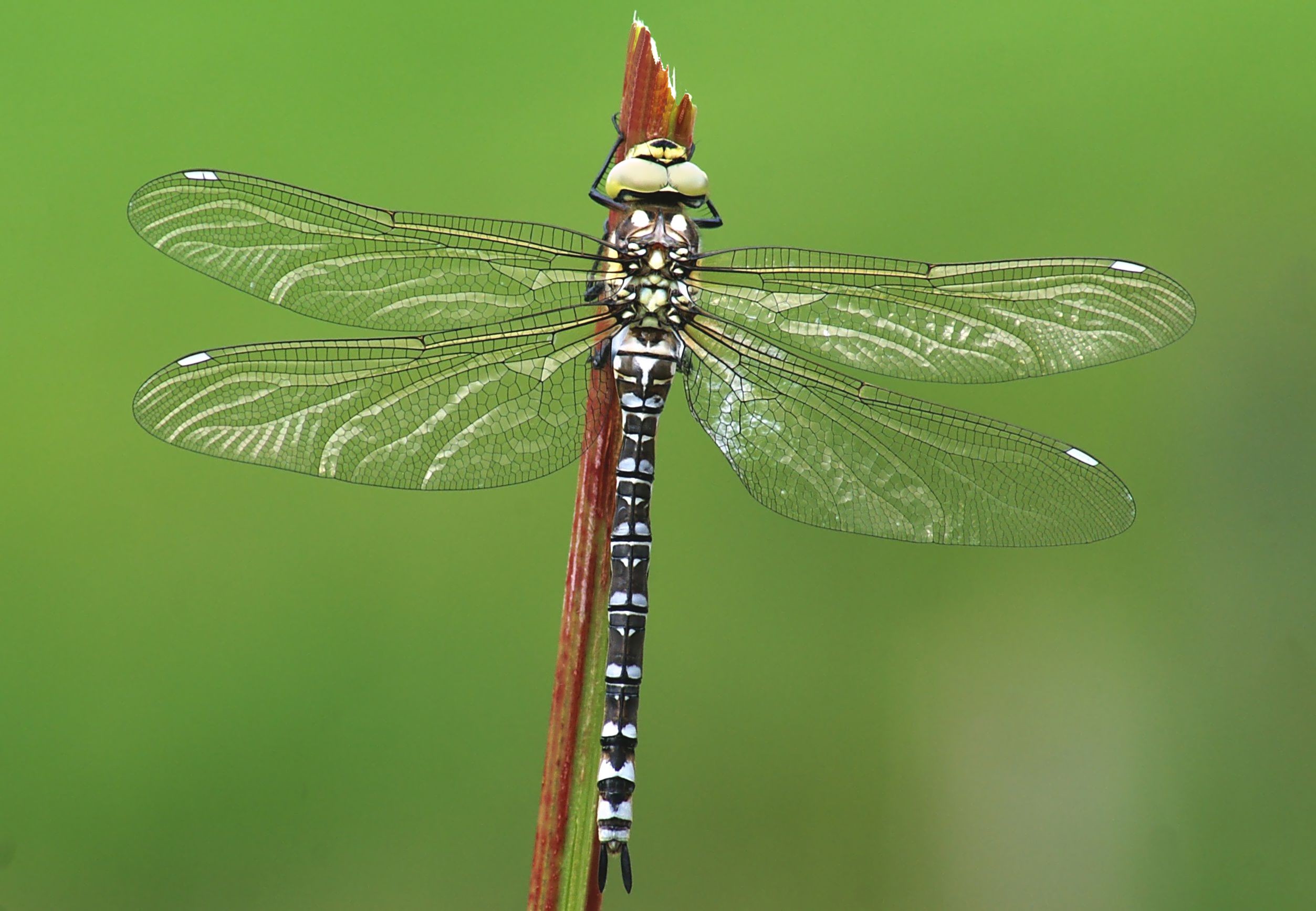
Moreover, there is no reason that the wing length / body length ratio should be the same between Namurotypus and Meganeura / Meganeuropsis, whose wingspan is two times larger. Indeed (hold on to your chair, this is getting technical), in order to fly as efficiently, it is the ratio between wing surface and body weight (so, proportional to the body volume) that has to stay constant. As surface increases as a function of the square of the length, and volume as a function of the cube of the length (this is part of what we call “surface area-to-volume ratio”, which explains a lot in biology), then an increase of body volume would result in an even greater increase of wing length, so that the surface-volume ratio is conserved. To give a concrete example, a hummingbird (e.g. Archilochus alexandri (Bourcier & Mulsant, 1846)) measures 10 cm long for 11 cm of wingspan (1.1 ratio), a rock dove measures 37 cm long for 72 of wingspan (1.95 ratio) and an Andean condor measures 130 cm long for 320 of wingspan (2.46 ratio!). This example may be overkill exaggerated, and bird biology has a huge impact on this ratio, but it reflects a biological reality: that wingspan increases faster than body length. If we accept that Namurotypus and Meganeuropsis had a close enough morphology to be compared (which would elicit a number of hypotheses that I will spare you), then its body length is estimated to be 25 cm max. Thus we are very far from the 35 to 40 cm that we can find when comparing to an extant hawker, and weights in the range of 200 g are probably exaggerated.
A question rises then, how else can we estimate griffenfly weights? Well, some researchers did it. First, I have to say that I made a personal estimate of these animals’ weight using the body length mentioned earlier, and extant dragonflies weight data with similar morphology (so, no big hawker). I won’t expand on this though, and will only speak about published results, I’ll just note that mine are similar. I have found two studies, using two different methodologies and that seemed valid.
The first one is from May (1982), which studies the thorax dimensions of Meganeura to deduce the amount of muscle that it could contain, and as a consequence the weight that these muscles could lift. I find it quite smart. The resulting weight is 17.8 g (and there is no typo here). The second study (Dorrington, 2016) proposes a new approach to determine the maximum weight of dragonflies. It uses a complex model including several parameters such as muscular power, atmospheric pressure (a priori higher in giant griffenflies times) or mating modalities. This model evaluates the maximum load that these insects could lift and deduces their weight. Let’s be honest, I don’t know enough to judge the quality of their formulas and thus of their model, all I can say is that the general approach seems logical to me, and that they don’t say “Meganeura? More like a 2-foot turkey dragonfly”, quite the contrary.
Their model, whose limits they accept due to the fact that griffenflies are poorly conserved, gives a 34 g weight for Meganeuropsis (and 6.3 for Namurotypus, better conserved, so more reliable).
To conclude, with these less biased models, our griffenflies have been on a huge diet and have lost 90% of their weight! Just to say, weight reductions are a pretty common phenomenon in palaeontology, and some sauropods have lost dozens of tons!
Paleodictyoptera’s weight has never been a huge topic for anybody. As they are considered as griffenflies’ preys, and as some griffenflies hunted in flight (Nel et al,, 2016), it is highly probable that they didn’t weigh more than their predators. Even so, and in the absence of studies of this subject, I will not expand on this subject. The same is true for Bojophlebia, even if the remarkably well conserved fossil shows a creature with a frail body, that shouldn’t have weighed much.
For Titanoptera, the same can be said, but some points can be addressed. Titanoptera are big Orthopteroids (most of them were far from being giants though). As in their closest extant relatives, they had fanned hindwings and mostly relied on them to fly. Nonetheless, when we look at some of the largest known species (lucky, Gigatitan vulgaris Sharov, 1968, one of the largest, is known from many specimens, of which some have part of the body conserved), the hindwings seem quite small for such an insect. A simple comparison with the largest extant flying orthopterans (which are smaller), shows that these large Titanopterans definitely don’t have the wings to fly. Unbound from this constraint, Titanoptera could have become much heavier. As always, I’ve done my own estimate, but it is way too hypothetical to be discussed here [1].
To put it in a nutshell, the correct measurements for giant insects are as follows: griffenflies reached a little less than 70 cm of wingspan, 25 cm long and 35 g. All other giant fossil insects were smaller in wingspan and in length (respectively up to 40 and 20 cm), but Titanoptera were probably heavier, even though their weights are unknown.
This is good and well, we have a good set of measurements for giant insects. But we have only looked at what’s going on in the fossil record. How can we assess size without actually looking at what we have today? How can we be sure we’re not missing something in the big picture?
This is why the next step in the next article will be to look at modern insects, and do a true comparison.
Click here to read the second article.
Notes
[1] I am well aware of my unconditional love for Orthopterans, and by extension to their cousins, Titanopterans. And it is well because of this bias that I would prefer not to expand on them.
Bibliography at the end of the second article.
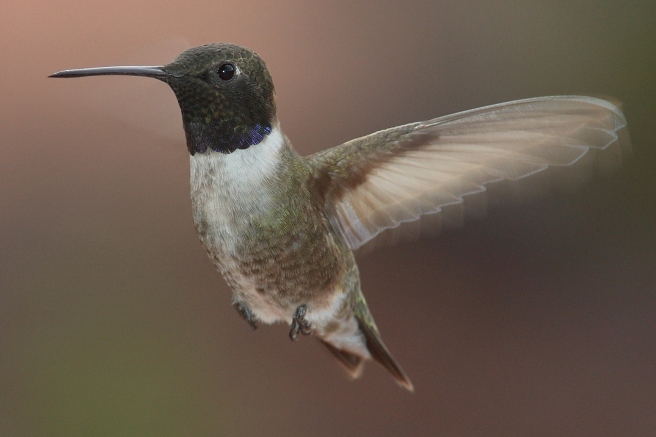

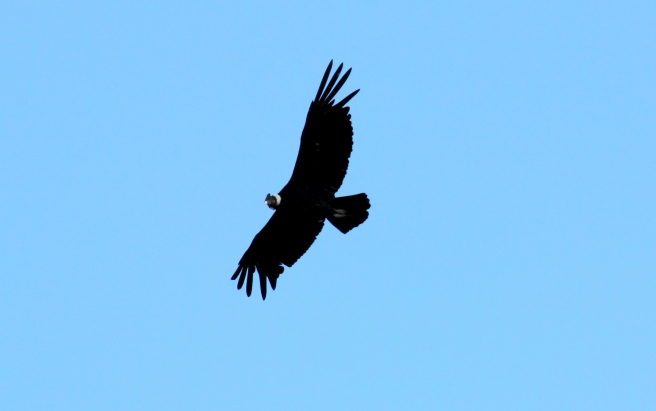
[…] the first part (that you can find here), we looked at extinct giant insects and assessed their size. It is time we adopt an objective […]
[…] like to thank my secret informator for explaining to me how insects work for years now (and writing excellent blog posts on their own), for giving me bibliography to read and proof-reading and -eyeing this piece. I’d also like […]